Scientific name Halesia Rank Genus | ||
 | ||
Lower classifications Halesia tetraptera, Halesia diptera, Halesia carolina, Halesia macgregorii | ||
Halesia, also known as silverbell or snowdrop tree, is a small genus of four or five species of deciduous large shrubs or small trees in the family Styracaceae.
Contents
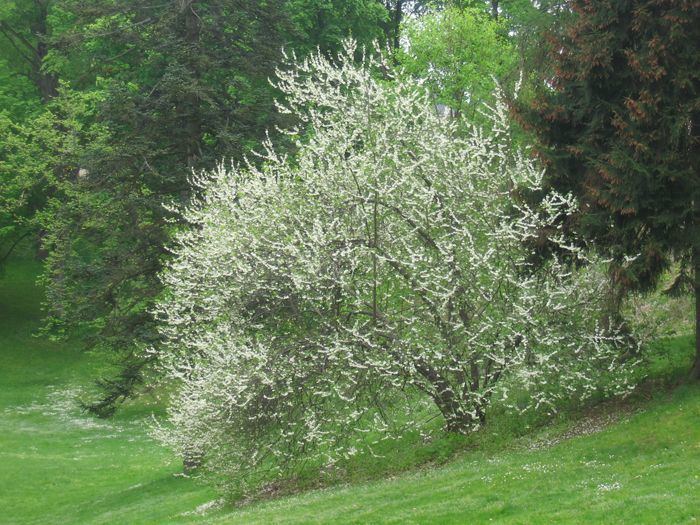
Halesia monticola
Range
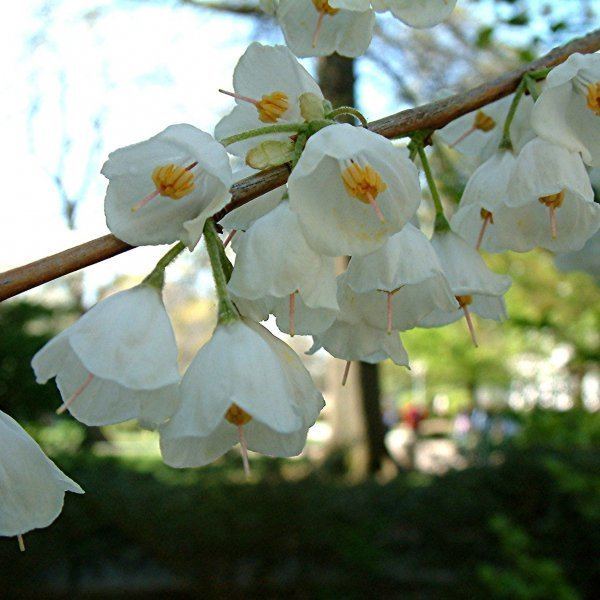
They are native to eastern Asia (southeast China) and eastern North America (southern Ontario, Canada south through Florida and eastern Texas, United States).
Description
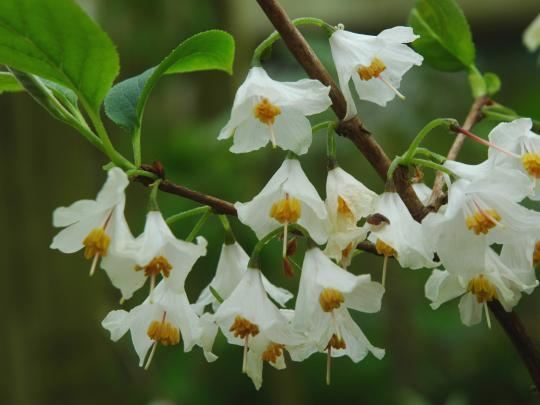
They grow to 5–20 m (16–66 ft) tall (rarely to 39 m (128 ft)), and have alternate, simple ovate leaves 5–16 cm long and 3–8 cm broad. The flowers are pendulous, white or pale pink, produced in open clusters of 2-6 flowers, each flower's being 1–3 cm long. The fruit is a distinctive, oblong dry drupe 2–4 cm long. All species except H. diptera have four narrow longitudinal ribs or wings on fruit; diptera only has two, making it the most distinctive of the group.
Species
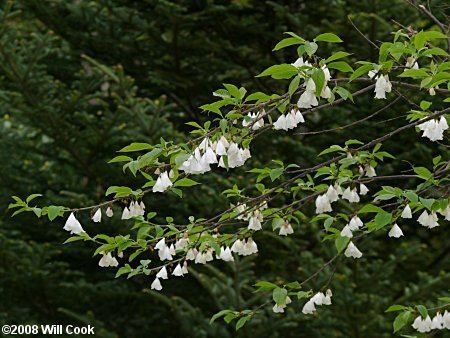
which includes a variety treated by some as a full species:
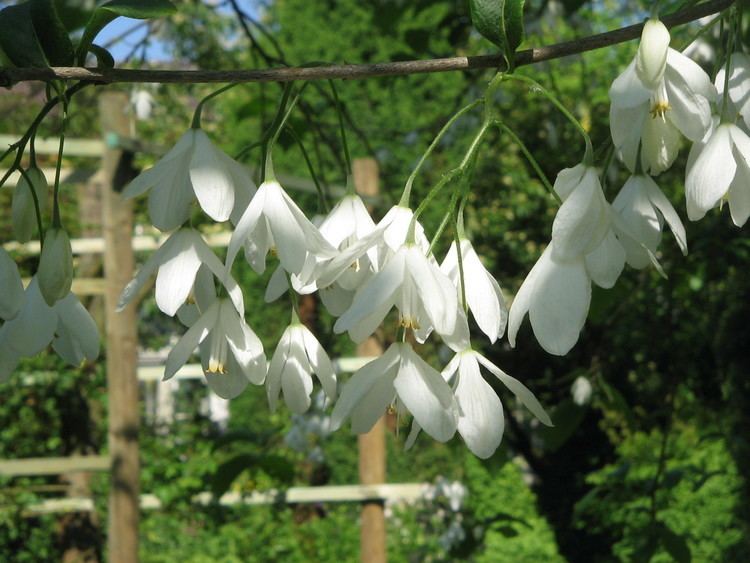
H. monticola is the largest of the genus, with specimens up to 39 m (128 ft) tall known in the Great Smoky Mountains National Park in North Carolina; the second-largest is H. macgregorii, reaching 24 m (79 ft) in China. The others rarely exceed 10 m (33 ft) tall. H. monticola is considered by some to be a subspecies of H. carolina (aka H. tetraptera). However, there appears to be a consistent size difference between the two taxa.
Taxonomy
The taxonomy and naming of the American species is confused and extensively disputed. The first dispute is over the exact identity of the specimen first named by Linnaeus as H. carolina; some contend that it is the same as H. parviflora, while others say it is the same as H. tetraptera. The second dispute is over whether H. monticola is sufficiently distinct from the other species to merit specific recognition or not (with its varietal placing depending on the above question, too). Neither question has yet been conclusively answered. The treatment here includes both H. carolina (small) and H. monticola (large).
The genus was named after Stephen Hales by John Ellis, publishing the name in the tenth edition of Linnaeus's Systema Naturae in 1759. The name is conserved as the same name had been used in an obscure earlier publication in 1756 for a different plant.
Cultivation and uses
Silverbells are popular ornamental plants in large gardens, grown for their delicate pendulous flowers in late spring.
